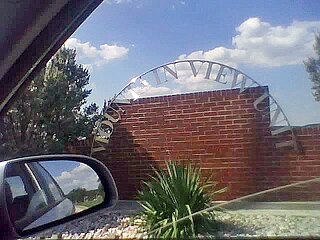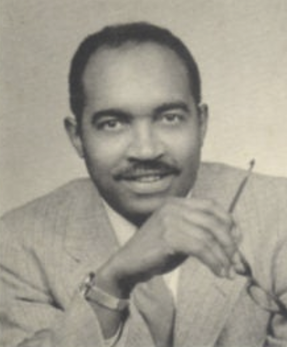Related Research Articles

Middletown is a city in Middlesex County, Connecticut, United States. Located along the Connecticut River, in the central part of the state, it is 16 miles south of Hartford. Middletown is the largest city in the Lower Connecticut River Valley Planning Region. In 1650, it was incorporated by English settlers as a town under its original Native American name, Mattabeseck, after the local Wangunk village of the same name. They were among many tribes along the Atlantic coast who spoke Algonquian languages. The colonists renamed the settlement in 1653.

Greater Hartford is a region located in the U.S. state of Connecticut, centered on the state's capital of Hartford. It represents the only combined statistical area in Connecticut defined by a city within the state, being bordered by the Greater Boston region to the northeast and New York metropolitan area to the south and west. Sitting at the southern end of the Metacomet Ridge, its geology is characterized by land of a level grade along the shores of Connecticut River Valley, with loamy, finer-grained soil than other regions in the state. Greater Hartford, had a total population of 1,213,531 at the 2020 United States census.

Franklin Academy is a co-ed special education boarding school in East Haddam, Connecticut, serving students in grades 8-12 as well as post-graduate students. The school's primary mission is to provide education to adolescents and young adults with nonverbal learning disabilities and autism spectrum disorders.
East Catholic High School is a private, college preparatory high school located in Manchester, Connecticut, United States, under the auspices of the Archdiocese of Hartford. The parochial school was founded in 1961 and is inspired by the charism of the Sisters of Notre Dame de Namur. East Catholic is the only school in the Archdiocese of Hartford that has had the continued presence of its founding order throughout its history.

In criminal justice systems, a youth detention center, known as a juvenile detention center (JDC), juvenile detention, juvenile jail, juvenile hall, or more colloquially as juvie/juvy or the Juvey Joint, also sometimes referred to as observation home or remand home is a prison for people under the age of majority, to which they have been sentenced and committed for a period of time, or detained on a short-term basis while awaiting trial or placement in a long-term care program. Juveniles go through a separate court system, the juvenile court, which sentences or commits juveniles to a certain program or facility.

Van Vleck Observatory is an astronomical observatory owned and operated by Wesleyan University. It was built in 1914 and named after the former head of the Department of Mathematics and Astronomy at the university, Prof. John M. Van Vleck. It is located in Middletown, Connecticut (USA).
Michael P. Lawlor is an American politician, criminal justice professor, and lawyer from Connecticut. A Democrat, he served as a member of the Connecticut House of Representatives from 1987 to 2011, representing the 99th district in East Haven. Lawlor resigned from the legislature on January 4, 2011 to serve in Dan Malloy's administration as undersecretary for criminal justice policy and planning at the Office of Policy and Management.

The Texas Youth Commission (TYC) was a Texas state agency which operated juvenile corrections facilities in the state. The commission was headquartered in the Brown-Heatly Building in Austin. As of 2007, it was the second largest juvenile corrections agency in the United States, after the Florida Department of Juvenile Justice. As of December 1, 2011, the agency was replaced by the Texas Juvenile Justice Department.
Matthew L. Lesser is an American politician who represents the 9th district in the Connecticut State Senate. A member of the Democratic Party, he was first elected to the State House in 2008, and re-elected in 2010, 2012, 2014, and 2016. He won election to the state Senate from the 9th district in 2018, and was reelected in 2020 and 2022. Lesser unsuccessfully sought the Democratic nomination for Connecticut Secretary of the State in 2022.
Lantz v. Coleman is a Connecticut superior court case that addresses the constitutionality of forcibly feeding prison inmates on hunger strikes. The court ruled in favor of force feeding.

Edgar Fauver was an American athlete, coach, university administrator and medical doctor. He played football and baseball for Oberlin College in the 1890s. He later served as the athletic director at Wesleyan University from 1911 to 1937. He was also a pioneer in college athletics for women, coaching basketball and introducing baseball at Barnard College in the 1900s.

The Mountain View State School was a juvenile rehabilitation facility operated by the Texas Youth Council in Gatesville, Texas. The building and land that once housed the school now house the Mountain View Unit, a Texas Department of Criminal Justice women's prison.

Giddings State School is a juvenile correctional facility of the Texas Juvenile Justice Department located in unincorporated Lee County, Texas, near Giddings. In 2004, the state school was Lee County's largest employer.

The Connecticut Department of Children and Families (DCF) is a state agency of Connecticut providing family services. Its headquarters is in Hartford.
Bergin Correctional Institution was a low-security state prison for men in Storrs-Mansfield, Connecticut. It was built in 1988 as the Northeast Correctional Institution and received its first inmates on March 13, 1989. After briefly closing in 1997 and reopening in 1999, the prison closed for good on August 12, 2011, due to years of declining prisoner population.
Wethersfield State Prison was the second state prison in the state of Connecticut. Used between 1827 and 1963, it was later demolished and the site turned into a park on the banks of the Connecticut River.
Len Fasano is a Republican member of the Connecticut Senate, representing the 34th District since 2003. Fasano was sworn in as Senate Republican President Pro Tempore in January 2017. Under the new leadership role Senator Fasano will lead a Republican caucus with considerably more control over the Senate's agenda than in previous years as a result of a power sharing agreement negotiated after Republicans gained three seats in the Connecticut Senate, creating a tie for the first time since 1893. Previously, he had served as the Senate Minority Leader since 2015.
Janet S. York Correctional Institution is Connecticut's only state prison for women, located in Niantic. The facility opened in its current form in October, 1994, and houses a maximum of 1500 at a range of security levels from minimum to super maximum.
The Connecticut Juvenile Training School (CJTS) was a juvenile prison in Middletown, Connecticut, that operated under the Connecticut Department of Children and Families from 2001 to 2018. Established in proximity to the Connecticut Valley Hospital (CVH), CJTS held male inmates age 12–17 with capacity for 240 inmates. In 2021, Connecticut governor Ned Lamont announced that he was considering reopening the prison to hold immigrant children.

Horatio Theodore Strother was an American historian and educator who wrote an influential 1962 book on the Underground Railroad in Connecticut. His teaching career culminated in a professorship at the University of New Haven from the 1960s.
References
- Leavitt, Sarah A. (Class of 1992) (April 1992). "Neglected, Vagrant, and Viciously Inclined: The Girls of the Connecticut Industrial School, 1867-1917". Middletown, Connecticut: Wesleyan University Honors College. Archived from the original on 6 September 2013. Retrieved 20 August 2013.
{{cite web}}: CS1 maint: numeric names: authors list (link) - Honors College Bachelor's Degree Thesis
Notes
- ↑ "DCF Offices and Facilities." Connecticut Department of Children and Families. February 13, 1998. Retrieved on December 2, 2010.
- 1 2 "New girls unit to open at Children's Place." Journal Inquirer . Tuesday July 16, 2002. Retrieved on December 17, 2015.
- ↑ Hamilton, Elizabeth (1999-08-20). "Getting Long Lane Right". Hartford Courant . Retrieved 2019-05-10.
- 1 2 3 4 5 "Long Lane School". Connecticut State Library. Archived from the original on 2012-09-12. Retrieved 2019-05-10.
- 1 2 Leavitt, p. 1.
- 1 2 Leavitt, p. 2.
- 1 2 3 Mayerwitz, Scott. "Attempted Acquisition of Long Lane, 1956-7". Wesleyan University. Archived from the original on 2012-09-06. Retrieved 2019-05-10.
- ↑ "A Chronology Of Failure A Brief History Of The Connecticut Juvenile Training School". Hartford Courant . 2005-08-02. Retrieved 2019-05-10.
- 1 2 Weiss, Eric M. (1999-01-08). "Former Official To Spearhead Long Lane Effort". Hartford Courant . Retrieved 2019-05-10.
- ↑ "Chapter Five." Legislative Program Review and Investigations Committee, Department of Children and Families. Retrieved on December 17, 2015.
- 1 2 Seay, Gregory. "LONG LANE TO CLOSE SOON ; GIRLS FROM SCHOOL TO BE DISPERSED." Hartford Courant . November 26, 2002. B1. Retrieved on August 23, 2010.
- ↑ Blint, Dwight F.; Colin Poitras (1998-12-09). "Long Lane Population Is Mainly Minority". Hartford Courant . Retrieved 2019-05-10.